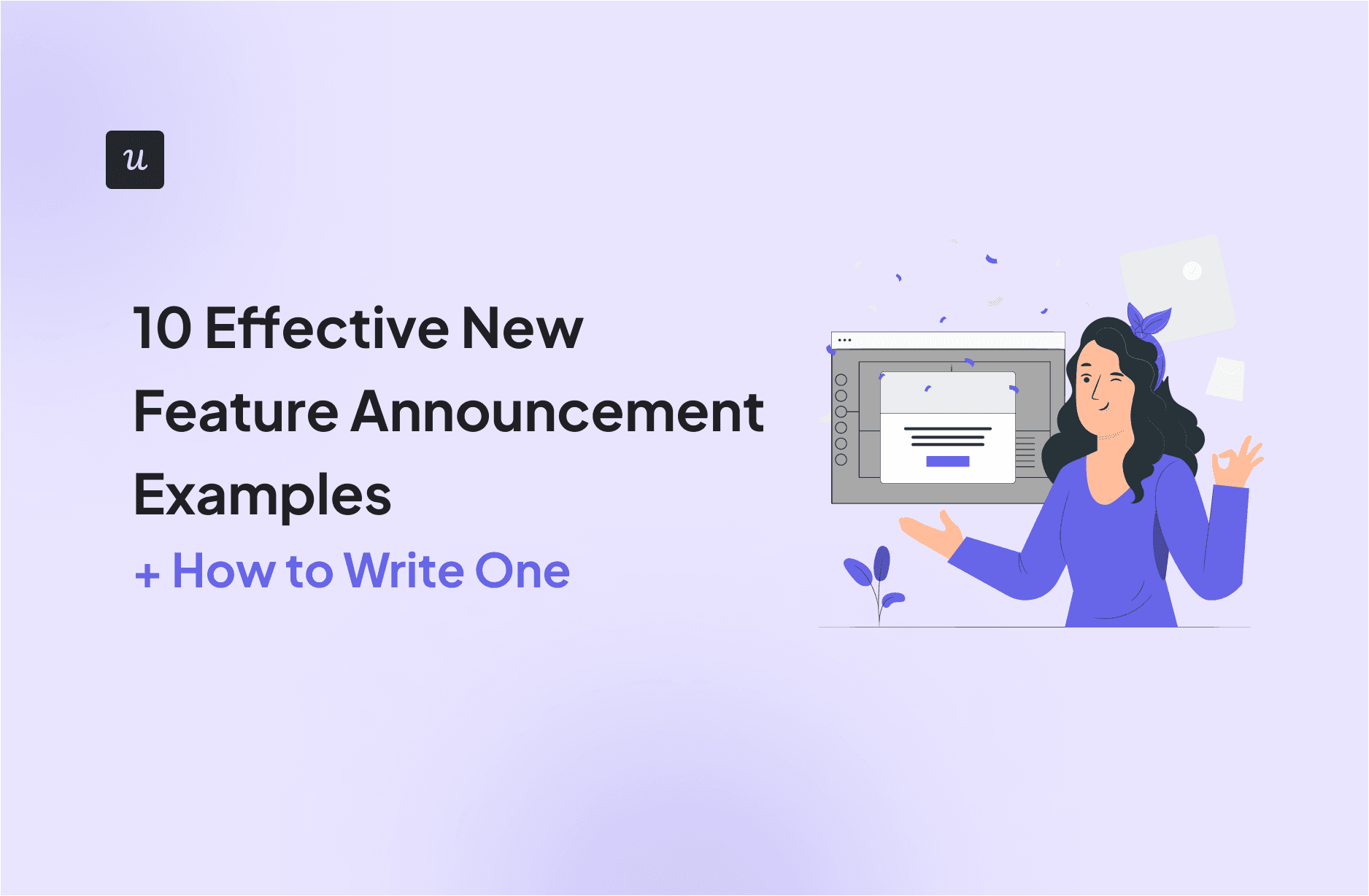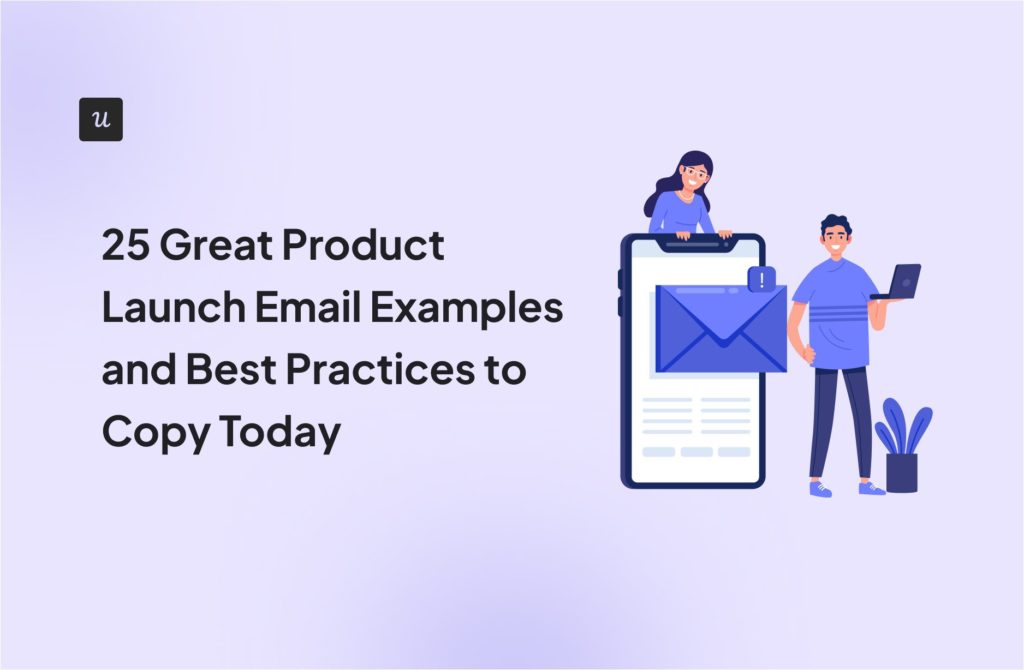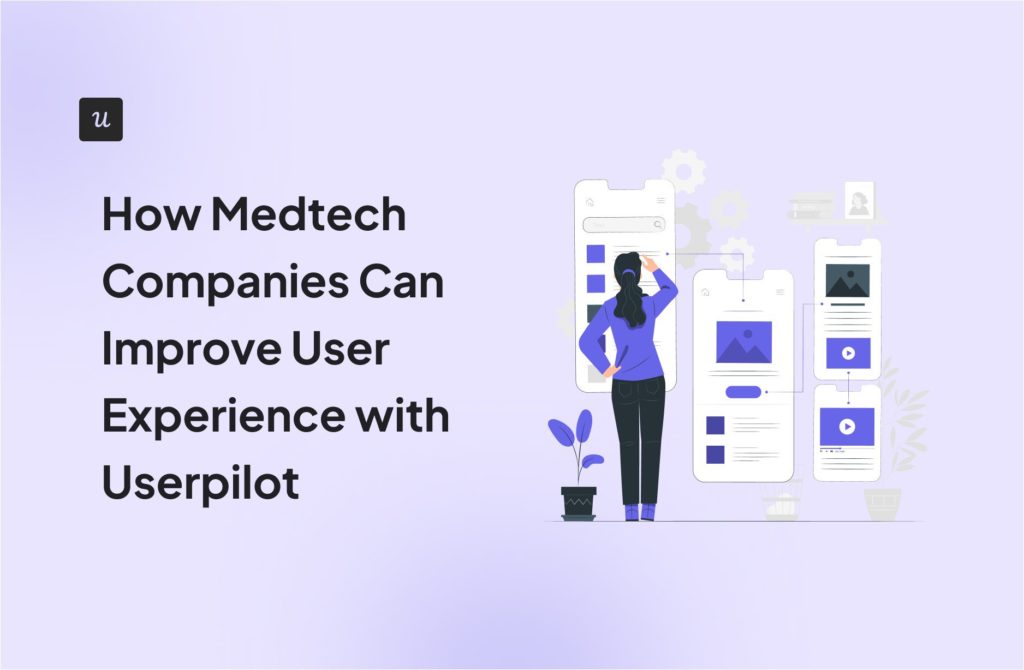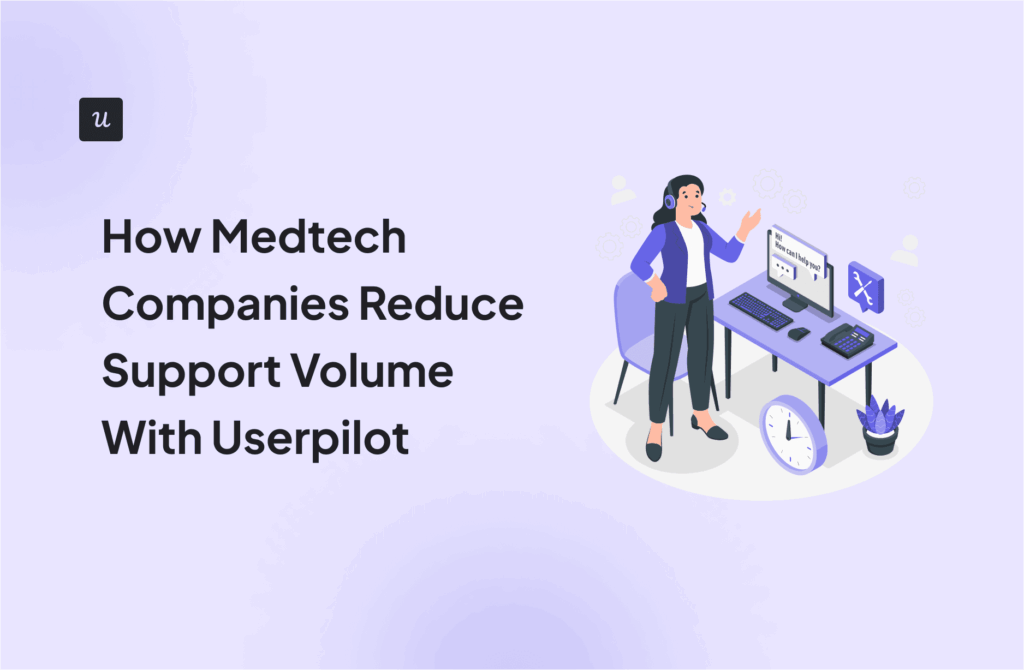
New Feature Announcement Guide: How to Write One + Real Examples
No matter how innovative or helpful your product launch may be, it can easily be overlooked if you don’t follow a new feature announcement guide.
For this, we’re going to explore:
- What makes an effective new feature announcement?
- Examples of new feature announcements from successful companies.
- How to build a strategy for writing compelling new feature announcements.
Get The Insights!
The fastest way to learn about Product Growth, Management & Trends.
What is a new feature announcement?
A new feature announcement is a communication designed to inform users about recent updates, enhancements, or entirely new features in a product or service.
The goal of a new feature announcement is to not only notify users of the change but to encourage them to explore and adopt it.
Depending on the audience and platform, these announcements can take various forms, such as in-app messages, emails, blog posts, or social media updates.
Different types of new feature announcements
When announcing new features, choosing the right channel for your announcement is important to ensure maximum engagement.
Hence, we’ll go over the most common types of new feature announcements:
In-app announcements
In-app announcements are messages displayed directly within your product when users log in or interact with a specific feature. And it can be highly effective for drawing attention to new features without disrupting the user’s workflow.
These announcements work best when you have just updated a feature or added a new capability that can be quickly explained in-app. For example, if you’re launching a new dashboard feature in your app. Users who log in and visit the dashboard will see a small notification or tooltip introducing them to the feature and guiding them on how to use it.

Feature announcement emails
Feature announcement emails are a versatile and highly customizable way to notify users about new features. They allow you to reach both active and inactive users. And provides a detailed explanation of the new functionality.
For instance, if you just launched a Chrome extension, you can send an email to all users (both active and inactive) explaining how this integration can save them time and improve their workflow.
This can be particularly effective for re-engaging users who haven’t logged in recently, sparking their interest in the new feature.

Blog articles feature announcement
Blog posts are a powerful way to explain new features in depth. They allow you to showcase the feature’s benefits, provide detailed use cases, and even offer tutorials on how to best use the new functionality.
For example, if you’ve just released an AI feature for your product, you can write a blog post detailing the improvements, use cases, and examples of how the update can help users save more time.
Plus, this can be especially useful for users who want more detailed information than what’s provided in an in-app message or email (can even link them together).

Social media posts
Social media is a quick way to spread the word about a new feature.
When done well, it can reach a broader audience, meaning that it might attract new users who are interested in your new release.
For this, it’s best to use social media when you release a feature that represents a competitive advantage (i.e. a feature that prevented many potential customers from using your product in the past).
For instance, if you’ve just rolled out a new mobile version of your product, you can create a quick video or infographic showing how the feature works and publish it on social media.
This way, you can generate some buzz around it and encourage both users and new people to try it out.

Release notes feature announcement
Release notes provide an overview of all the recent updates and new features in your product.
While it’s not as engaging as other formats. They’re useful for users who want to keep track of changes and explore multiple updates at once.
Plus, release notes are especially needed when you roll out a huge update with many changes. For instance, if you implemented several updates and bug fixes in one go, you can create a detailed feature release note listing all the improvements and new features, allowing interested users (especially power users) to review everything at their own pace.

How to write a good feature announcement?
What makes a good feature announcement?
In short, an effective feature announcement copy should drive product engagement and feature usage.
For this, here are some tips you can follow to write proper announcements:
- Highlight the benefit to users: Focus on how the new feature releases will solve a problem or improve the user experience rather than just describing what it does.
- Use clear and concise language: Avoid technical jargon and keep your explanation straightforward so that all users can understand the value of the feature.
- Include a strong call-to-action (CTA): Encourage users to try the new feature by including a direct CTA such as “Try it now” or “Explore this new feature.”
- Target the right audience: For example, a new feature relevant to advanced users might not need to be shown to beginners.
- Leverage engaging visuals: Use screenshots, GIFs, or videos to help users visualize how the feature works and why it’s beneficial.
- Test and iterate: Use A/B testing to experiment with different versions of your announcement. Measure the engagement rate to see which message resonates best with your audience.
How to create a proper feature announcement strategy?
Introducing a new feature without a well-planned announcement strategy can lead to lower adoption rates.
For this reason, we’ll go over how you can create a successful feature announcement strategy:
Step 1. Define the goal and importance of the new feature announcement
Before crafting your announcement, determine what you want to achieve. Are you aiming to drive feature adoption, re-engage inactive users, or differentiate your product from competitors?
Start by outlining your goals, then consider why this feature is important and to whom (your existing customers, new users, or a specific segment).
You can use a goal-setting framework like SMART (Specific, Measurable, Achievable, Relevant, Time-bound) to have a clear vision of what you want to achieve. For the latter, define how this announcement will benefit your users and business.

As a result, you’ll be able to tailor your message and choose the right channels for distribution.
For instance, let’s say you aim to get 50% of your active users to adopt the new feature within the first month.
You can prioritize in-app announcements for immediate visibility, followed by a series of reminder emails.
Step 2. Choose your target audience
It doesn’t make sense to introduce an advanced feature to a user that’s barely getting the hang of your core features. It would create friction instead.
For this reason, target the right audience to ensure that the message resonates with users.
You can do this by using a tool like Userpilot. Segment your users based on behavior, product usage, or engagement levels. And then, create different announcement versions for each segment.
For instance, let’s say you’ve launched a feature tailored to advanced users. You can create a detailed in-app announcement with visual guides for them. And send a more general email to new users.

Step 3. Decide on your distribution channel and announcement type
When choosing the right format for your new feature announcement, you must ensure that the channel reaches users who are most likely to engage.
Here are the general rules:
- In-app announcements work well for features that users can test immediately.
- Emails are ideal when re-engaging inactive users or for features that might require support assistance.
- Blog posts allow for in-depth feature explanations, showing use cases, and features that require more guidance.
- When you’re releasing a feature that gives you a competitive advantage, social media can generate buzz and attract new users.
- Release notes are mostly important for technical updates, bug fixes, new integrations, and features that are meant for dev teams.
This doesn’t mean you shouldn’t consider using a combination of channels for maximum exposure.
For example, if you release a feature update aimed at existing users. You can use in-app messages for active users, followed by an email for users who haven’t logged in recently, and a social media campaign to generate some hype about it.
Step 4. Experiment with your feature releases and announcements
You can’t predict what will work best for you, so experimenting with your announcement is part of the process.
For this, you can use an A/B testing tool to perform experiments and figure it out yourself.

Here are a few tips to consider:
- Experiment with different formats, such as comparing an email campaign against an in-app notification.
- Test different in-app messages, CTAs, or visual elements to see which performs best.
- Leverage AI tools to create and optimize announcements based on user behavior and engagement data. And see which content performs better.

Step 5. Monitor feature engagement to evaluate the effectiveness of your feature announcement
Once your announcement is live, it’s crucial to track feature engagement to measure the performance of your announcement strategy.
For this, you can use analytics tools to measure key metrics. This can include click-through rates, in-app message open rates, retention rates, and feature usage.

As a result, you can understand whether the announcement resonated with your audience or not. For instance, if adoption rates are low, consider sending follow-up reminders or additional tutorials to help users get started.
New feature announcement examples from famous brands
Below are some examples of how top brands effectively launch new features, along with an explanation of why their strategies work.
1. Miro uses release notes right in the product
Miro, a collaborative whiteboarding tool, uses in-app modals to announce new features. As soon as users log in, they’re greeted with a pop-up message summarizing recent updates.
Not only that, Miro also allows users to click through to a full changelog, which provides even more detail.
This strategy works because the in-app message grabs users’ attention without being too disruptive. It provides just enough information to spark interest while offering the option to read more for those who want additional feature details.

2. Userpilot’s in-app feature announcement
Userpilot leverages its own platform to deliver interactive feature announcements.
When a new feature is launched, users see a guided walkthrough that introduces the functionality and shows them exactly how to use it.
This works because interactive walkthroughs allow users to immediately experience the value of the feature. This makes them more likely to adopt it—which is especially useful for complex updates that require more guidance.

3. Good new feature announcement example with engaging visuals from Figma
Figma, a design tool, excels at using visual elements to showcase new features. Their in-app announcement shows a branded image explaining the new functionality, paired with a short description and a clear CTA leading to a guide.
Figma’s strategy is great due to its strong attention-grabbing visuals. It makes the feature announcement both informative and visually appealing. And, the CTA also offers users a chance to explore more details and try the feature themselves.

4. Analyst Builder puts their release notes on social media
When making a more public announcement, Analyst Builder publishes feature updates directly to their LinkedIn page. These posts highlight the new functionality, include a link to more detailed release notes, and encourage engagement through comments and shares.
As mentioned before, social media is perfect for building buzz. And this way, Analyst Builder reaches both existing users and potential customers alike to attract more people to their platform.

5. Chameleon’s blog post feature announcement
Chameleon uses detailed blog posts to make announcements. It explains not only what the news is but also how it affects users and what’s next for the product.
For this purpose, the post is structured to offer insights into the problem the feature solves and provides some examples. As a result, Chameleon can provide in-depth context for the new change, making it ideal for users who prefer to understand the “why” behind the update.

6. Ahrefs changelog
Ahrefs, an SEO tool, has a public changelog where users can explore the latest updates and new features when they’re released. Each entry includes a brief description of the change, with links to more detailed blog posts or tutorials.
For this reason, this changelog serves as a one-stop-shop for power users who want to stay on top of every update. Plus, it provides an opportunity to include links to more detailed content, such as tutorials or blogs.

7. Notion uses influencer marketing to spread the word about its new features
Notion collaborates with influencers in the productivity space to promote new features.
These influencers share detailed reviews or tutorials of the new updates. And as a result, leverage their following to generate excitement and encourage adoption.
This is a smart strategy as it taps into a trusted voice within the community.
Moreover, influencers can explain new features in an authentic, relatable way that resonates with their audience. As a result, they can lead users to take action without the sensation of “being sold to.”

8. Mailchimp’s feature announcement email
Mailchimp frequently uses email campaigns to announce new features, like their enhanced A/B testing functionality.
These emails provide concise summaries of what’s new, are visually appealing, and include a direct CTA to learn more about the feature on their blog.
As we mentioned, emails are a great way to reach users directly and re-engage inactive customers.
So Mailchimp’s use of clear, concise in-app messaging makes it easy for users to understand the value of the new feature and use it if it interests them.

9. Zendesk uses guided webinars for their active customers
Zendesk offers live, guided webinars to introduce new features to their customers.
These webinars are interactive, allowing users to ask questions and see how the feature works.
These webinars provide a personal, hands-on way for users to engage with the product team and see exactly how the new feature works. Plus, it’s especially useful for large-scale or complex updates where users may have questions or need live demonstrations.

10. Evernote’s sidebar for in-app feature announcements
Evernote uses its sidebar to introduce new features to users unobtrusively.
The sidebar includes a small, non-intrusive notification about the new update, allowing users to explore the feature at their own pace without interrupting their workflow.
This approach ensures that users are aware of the new feature without feeling overwhelmed. This way, Evernote can maintain a seamless user experience while still promoting new updates.

How to make your new feature announcements more effective with Userpilot
Userpilot provides a range of features that can help you deliver targeted new feature announcements to ensure maximum adoption and user engagement.
Here’s how Userpilot can enhance your feature announcement strategy:
- Customizable UI elements: Use modals, banners, tooltips, and slideouts to create visually engaging in-app announcements.
- Segmentation capabilities: Target specific user groups based on behavior, engagement, and usage patterns.
- AI writing assistant: Leverage AI-generated content to craft effective and personalized announcements.
- A/B testing: Experiment with different announcement formats and messages to see which drives the most engagement.
- Interactive walkthroughs: Guide users through new features with step-by-step tutorials.
- In-depth analytics: Track user engagement, feature adoption, and the effectiveness of your announcements to continually refine your strategy.

That said, with this new feature announcement guide, you can leverage these tools to ensure your new feature announcements are not only noticed but fully adopted by your users.
So, if you’re a product manager trying to promote product launches, you can book a Userpilot demo to see how you can improve new feature adoption! 😉
New feature announcement FAQs
How do I announce a new feature?
To announce a new feature effectively:
- Define the goal of your announcement.
- Select the right audience.
- Use a mix of communication channels to ensure broad visibility.
- Focus on how the new feature benefits the users in a clear and concise message.
How do I inform my user about a new feature?
There are various channels for this:
- In-app notifications for active users.
- Emails for reaching both active and inactive users.
- Social media posts to create buzz and attract potential customers.
- Blog posts to explain the feature in detail.
- Release notes for big updates and power users.
How to introduce new features in UX?
Focus on making it as less intrusive as possible.
For this, you can use in-app messages, tooltips, or guided walkthroughs to highlight new features when they are relevant to the user.
For example, you can introduce a new dashboard feature when the user is about to interact with the dashboard.
How to communicate a new feature?
To communicate a new feature:
- Focus on the benefits instead of the functionality.
- Use simple language without jargon.
- Send the announcement contextually when the user is more likely to pay attention.
- Use visuals like screenshots, GIFs, or videos to also help users understand how to use the new feature effectively.
- Be actionable. Add a call-to-action (CTA) that directs users to try the feature right away.







